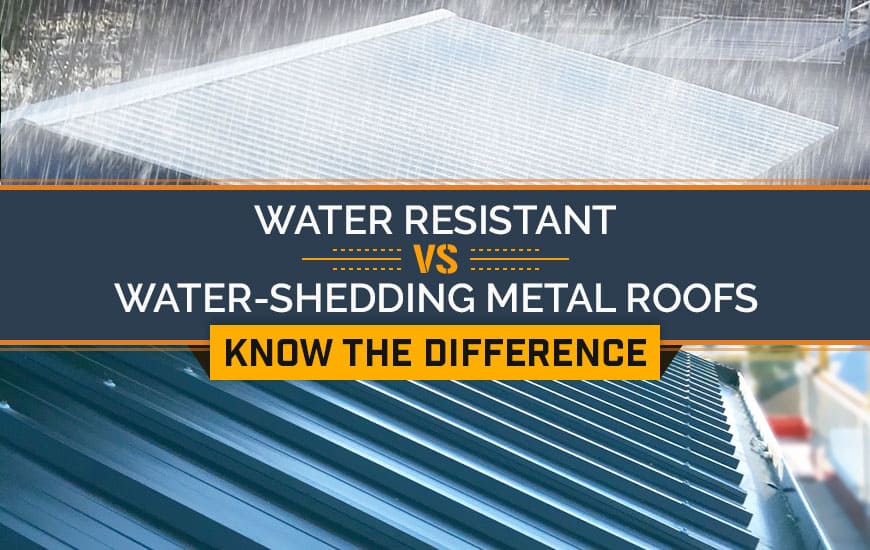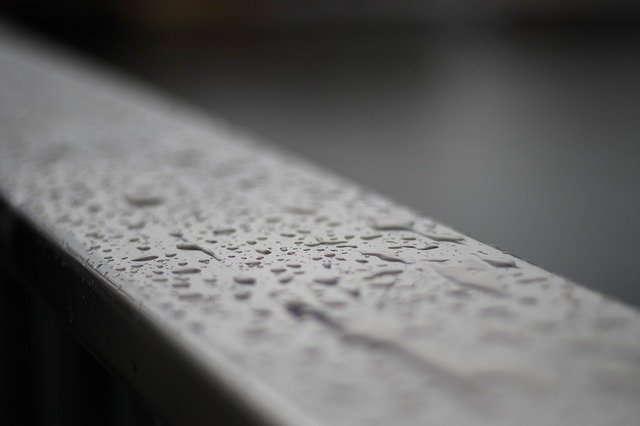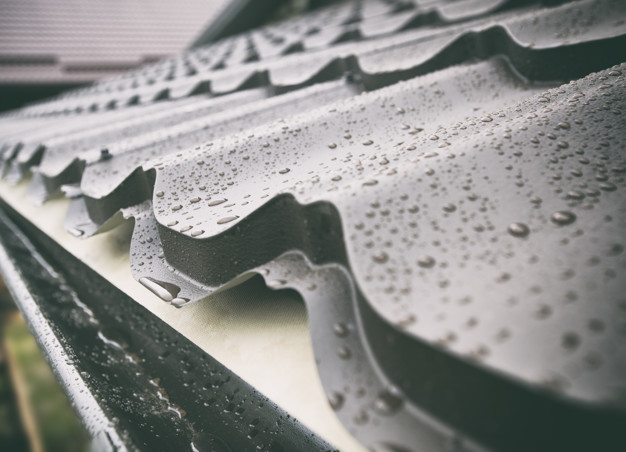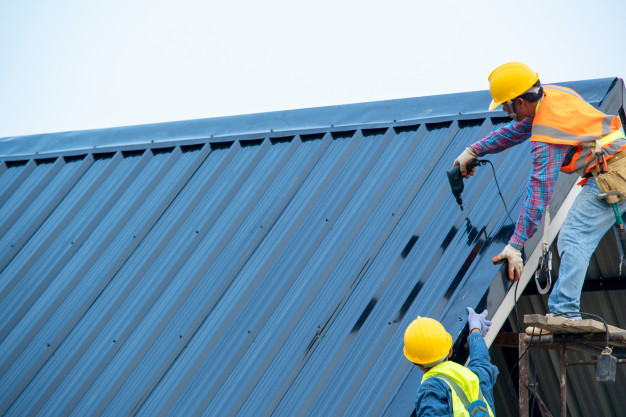
Moisture, water, and precipitation can antagonize and torment your metal building with damage and danger. The roof provides safety and shelter from outside water coming into and disrupting the building. When you seek the best protective roof, you can consider a water-resistant or water-shedding roof system to repel and reject water.

People have different ways of speaking about the ability of their prefab metal buildings and products to fight off the water. Consumers must be aware of the possibilities and limits of terms like waterproof, water-resistant, and water-shedding. Here we share the most popular definitions so that you know how to navigate the benefits and cons of each type.
If you see how these terms compare, it’s noticeable that water-shedding and water-resistant roofs have similarities and differences. For instance, they both use slope to some extent to repel excess or sitting water. Still, water-shedding roofs are often faster.

Water-shedding roofs, sometimes referred to as hydrokinetic roofs, shed rain, snow, and water very quickly. With a higher slope, greater amounts of water and drainage can make it toward gutters and spouts in your building. Its approach to water intrusions relies on steepness and slope. Mostly, a hydrokinetic roof prevents leakage and water infiltration by rolling it off as soon as possible. Through additional membranes and decking or underlayment, moisture barriers maintain water-shedding roofs. These even come with many different trim and profile details.

Like its water-shedding relative, water-resistant roofs use slope and angles as their primary weapons against water damage. That’s why they’re often known as hydrostatic roofs because they can prevent slow-moving water from entering your roof. These techniques to block moisture can be used on low or less steep roofing.
While these metal building roofs can handle water more slowly, they can still prevent standing and pooling with a standing seam. These seams measure two inches high and resist all kinds of water without exposing fasteners. This keeps the building from allowing water to enter from any opening as it constantly seeks a downward motion.
No matter where you live, the element of water follows and threatens your building. Making sure the roof is waterproofed during the installation process will protect the materials of your home and keep everything safe inside. You can avoid leaks and ceiling issues through prevention, and you can also add an extra layer of protection so that no water gets in your building. The consequences of not waterproofing your building could be roof leaks and disastrous water damage like stains.
Usually, this waterproofing involves items like base sheets, underlayments, and flashings. The base sheet, made of fiberglass or a composite, deals with the rafters and roof foundation. The underlayment suits sloping and flat roofs through sheets that adhere to the roof. Then, roof flashing fix openings around joints, valleys, returns, and hips. Gutters, of course, also help to divert water from your building and assist with its waterproofing systems.
Knowing these technologies of waterproofing, you can start to think of your own roof and decide what makes the most sense for your metal building. You might want the full suite of possibilities in seals, underlayment, sheets, and shingles, or you could seek to rest on slope and speed to protect you. Whichever you choose, know that you can waterproof your steel building in many different ways.
Deciding which kind of roof and waterproofing can be a challenge. But, the decision to work with one of the top metal building dealers like Garage Buildings couldn’t be more simple. Contact the experts and consultants at +1 (888) 234-0475 to learn how the right metal building can protect you from water.